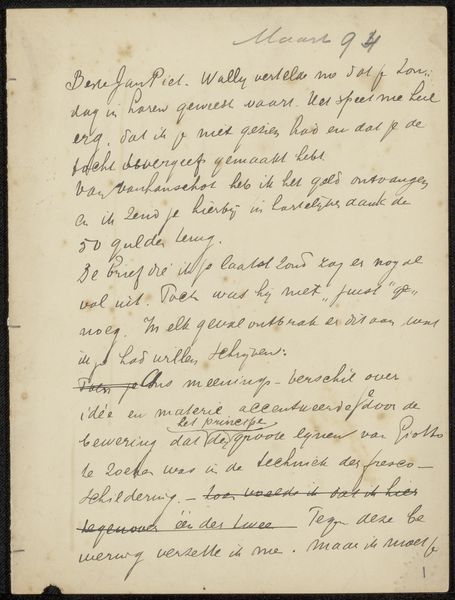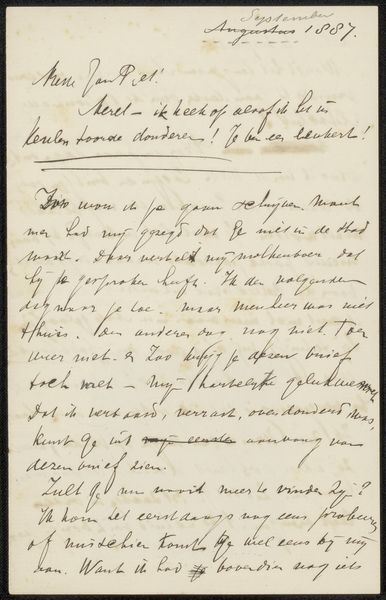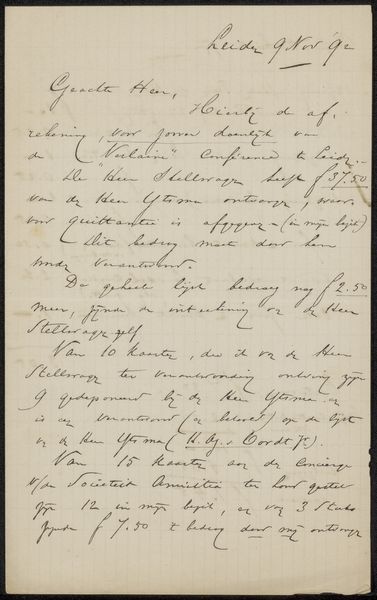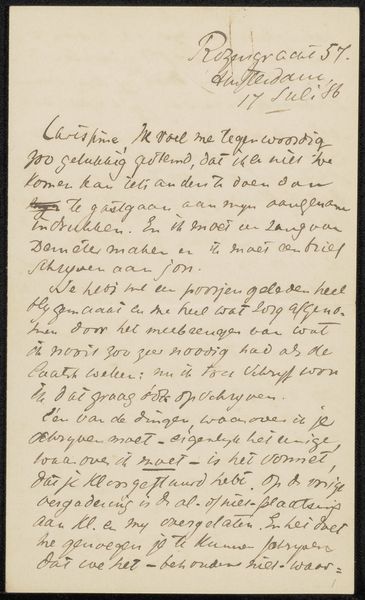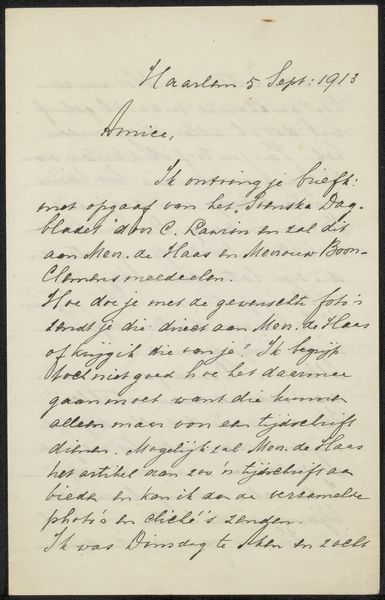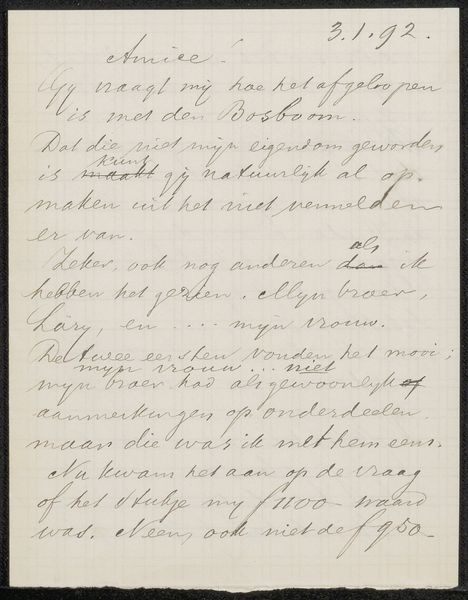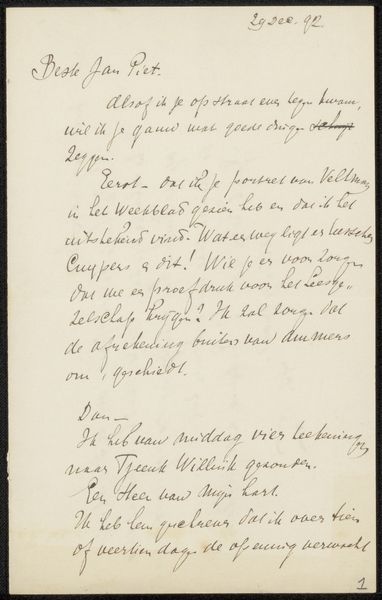
drawing, paper, ink
#
drawing
#
hand written
#
script typography
#
hand-lettering
#
old engraving style
#
hand drawn type
#
hand lettering
#
paper
#
ink
#
hand-written
#
hand-drawn typeface
#
pen work
#
handwritten font
Copyright: Rijks Museum: Open Domain
Curator: We're looking at a piece called "Brief aan August Allebé," potentially from 1873, by Klaas van Leeuwen. It's an ink drawing on paper. What strikes you about it? Editor: Immediately, the density of the script—it feels very intimate and personal, almost like eavesdropping on someone’s thoughts. The looping ascenders and descenders of the letters create a strong rhythm across the page, though the faded ink suggests age and fragility. Curator: Indeed. The act of handwriting itself was a very different experience then, steeped in ritual and societal expectations regarding correspondence. This letter offers a tangible connection to a time before typewriters and email, before the democratisation of rapid communication. Editor: From a formal perspective, notice how the script becomes almost abstract at points. The individual letters lose some of their legibility and merge into calligraphic gestures, prioritizing flow and movement over strict representation of language. It is also clearly created with a high degree of skill. Curator: Consider also Allebé himself. He was an influential figure in the Amsterdam art scene. This letter might give insights into artistic circles of the period or even provide historical clues about the development of Allebé’s career, particularly because we believe they met when Van Leeuwen took lessons from him. The handwritten form underscores its value as a direct line into this personal and professional network. Editor: I am struck by how little the aesthetic character has changed. The same types of letter-forms still exist as a marker of formality and care when they are presented as hand-written texts today. We see those exact curves reused. Curator: Absolutely, so while it offers a snapshot of 19th-century artistic relations, the aesthetics remain influential. It invites a reflection on how something as simple as handwriting is laden with historical, cultural, and aesthetic meaning. Editor: And that blend of skill, formality, and intentionality certainly shifts the context into the fine arts and away from a mere note or correspondence. Curator: Exactly. Examining "Brief aan August Allebé" allows us to appreciate the multiple layers of context woven into a single piece of paper. Editor: And focusing on the form helps us to unlock new aspects of meaning, despite the passage of time.
Comments
No comments
Be the first to comment and join the conversation on the ultimate creative platform.
